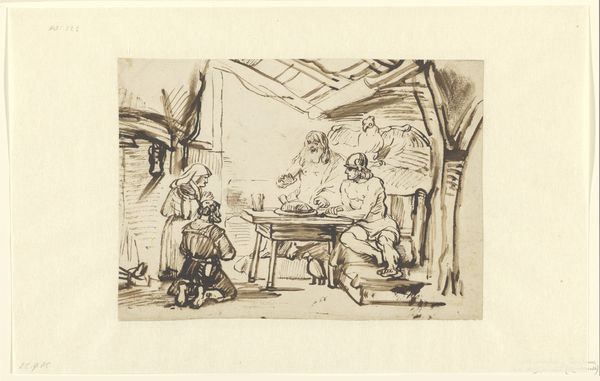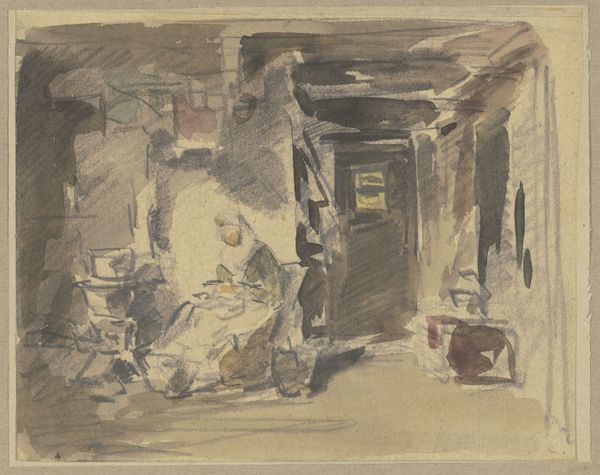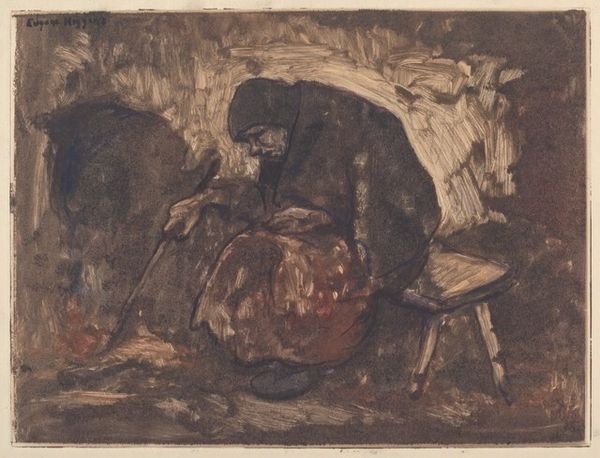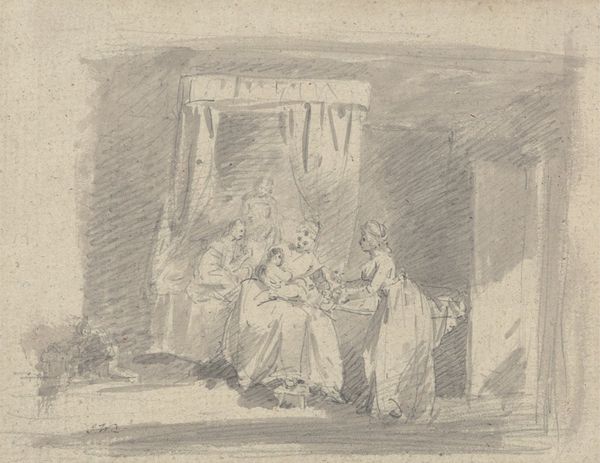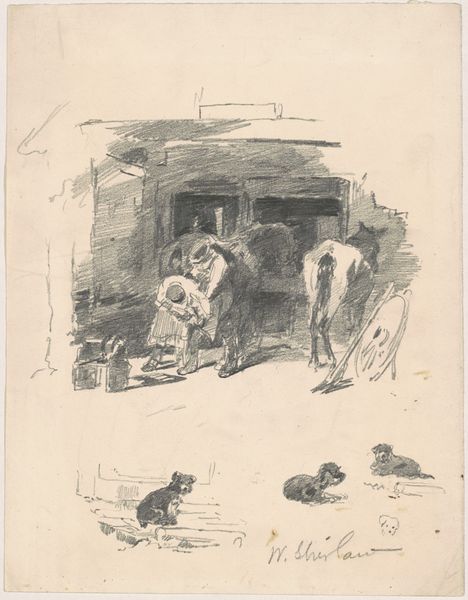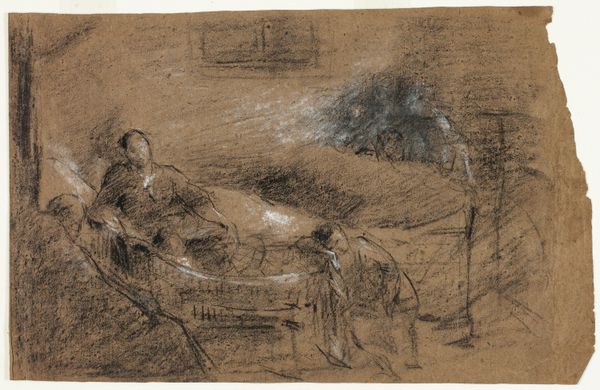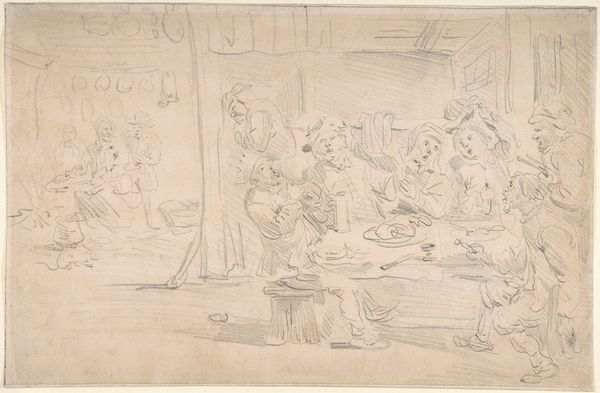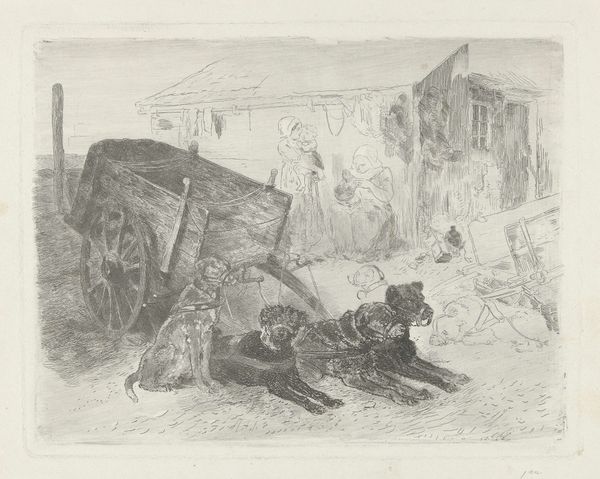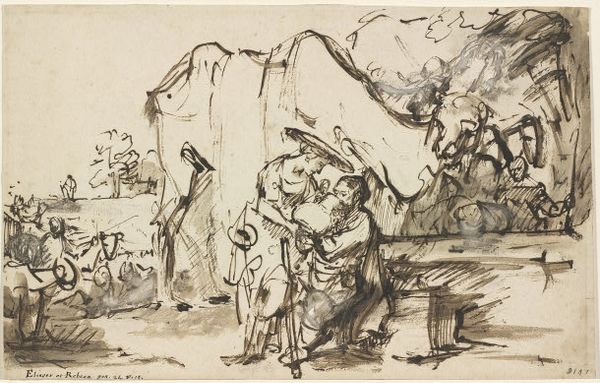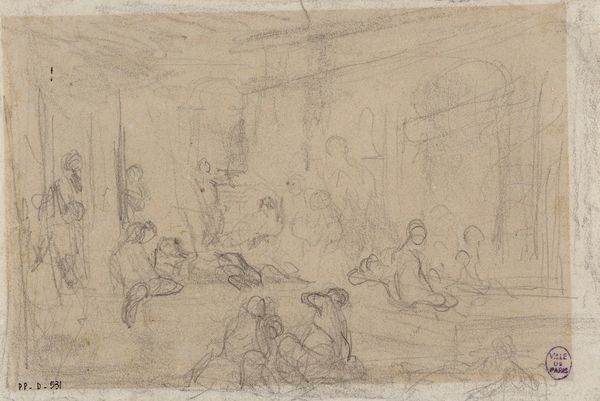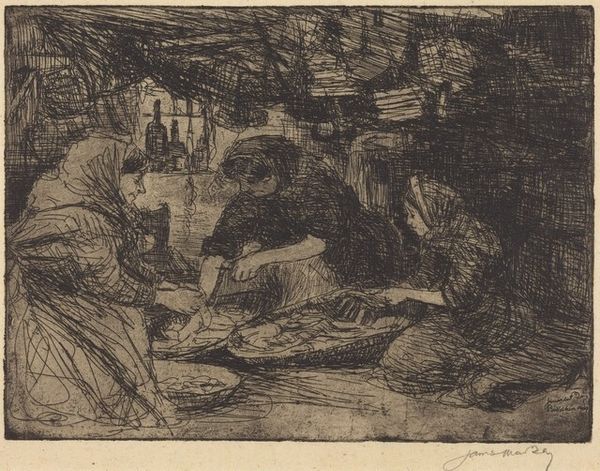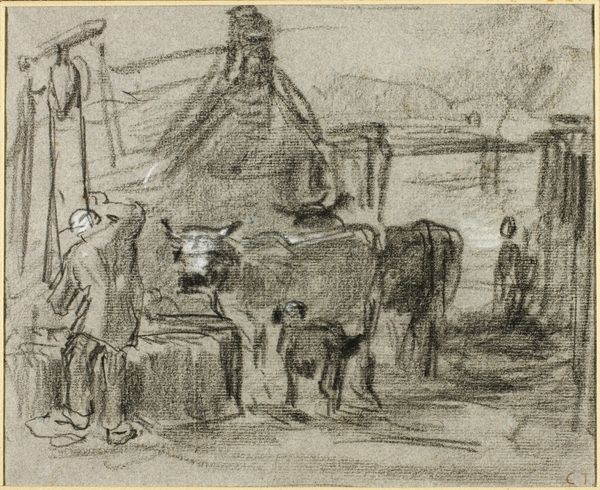
drawing, paper, ink
#
drawing
#
ink painting
#
figuration
#
paper
#
ink
#
watercolor
Dimensions: overall (approximate): 20.3 x 25.3 cm (8 x 9 15/16 in.)
Copyright: National Gallery of Art: CC0 1.0
Editor: This is George Overbury "Pop" Hart’s “Market, Mexico, Indian Woman Buying Trinkets,” a watercolor and ink drawing from around 1926. The atmosphere feels enclosed, almost secretive. What symbols do you see at play here? Curator: Enclosed, yes, and almost timeless, don’t you think? Observe the women. Their posture speaks volumes about their relationship to this marketplace – a place of both commerce and cultural exchange. The trinkets themselves are important. They become more than simple objects; they transform into signifiers of identity and cultural memory. Do you notice how the artist blurs the lines between the personal and the transactional? Editor: Yes, there’s a sense of intimacy despite the commercial setting. It makes me think about the survival of traditions. How does the use of ink and watercolor play into that feeling? Curator: Exactly! Ink and watercolor, both fluid and immediate, create a sense of both spontaneity and historical depth. Watercolor, with its inherent luminosity, infuses the scene with a dreamlike quality, referencing perhaps idealized memories. And ink, often associated with documentation and record-keeping, adds a layer of historical grounding, reinforcing a continuity of indigenous traditions. Consider the recurring visual motifs - can you identify specific shapes or arrangements that seem deliberate? Editor: The circles are striking – in the trinkets, and echoed in the women’s forms. Almost like cycles… Curator: Precisely. They're a potent visual metaphor for continuity and interconnectedness. Think of them as visual echoes rippling across time, suggesting both resilience and adaptation. What do you think these details tell us about cultural exchange in the 1920s? Editor: I hadn't considered that connection before! The way you brought together the materials and the circular motifs makes me think about the persistence of cultural identity even within a changing economic landscape. Curator: It's a potent piece, inviting us to see the layers beneath the surface of a seemingly simple market scene. We began with our observations and by tracing the lines and colors and shapes we discovered layers of emotional and psychological meaning.
Comments
No comments
Be the first to comment and join the conversation on the ultimate creative platform.

